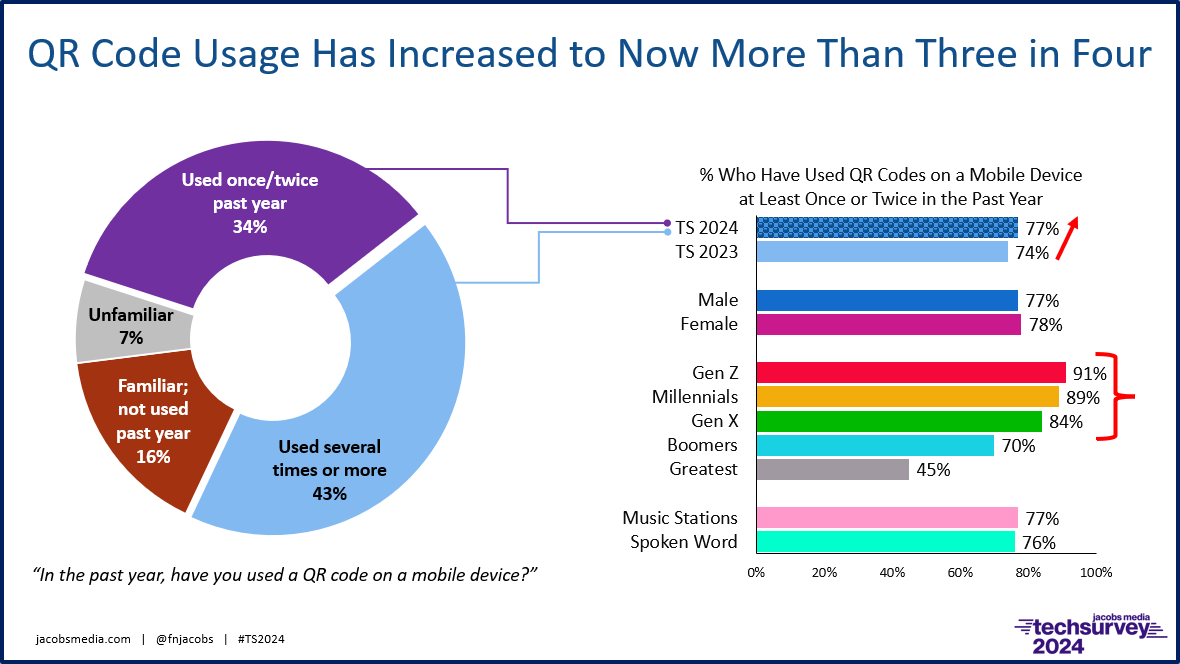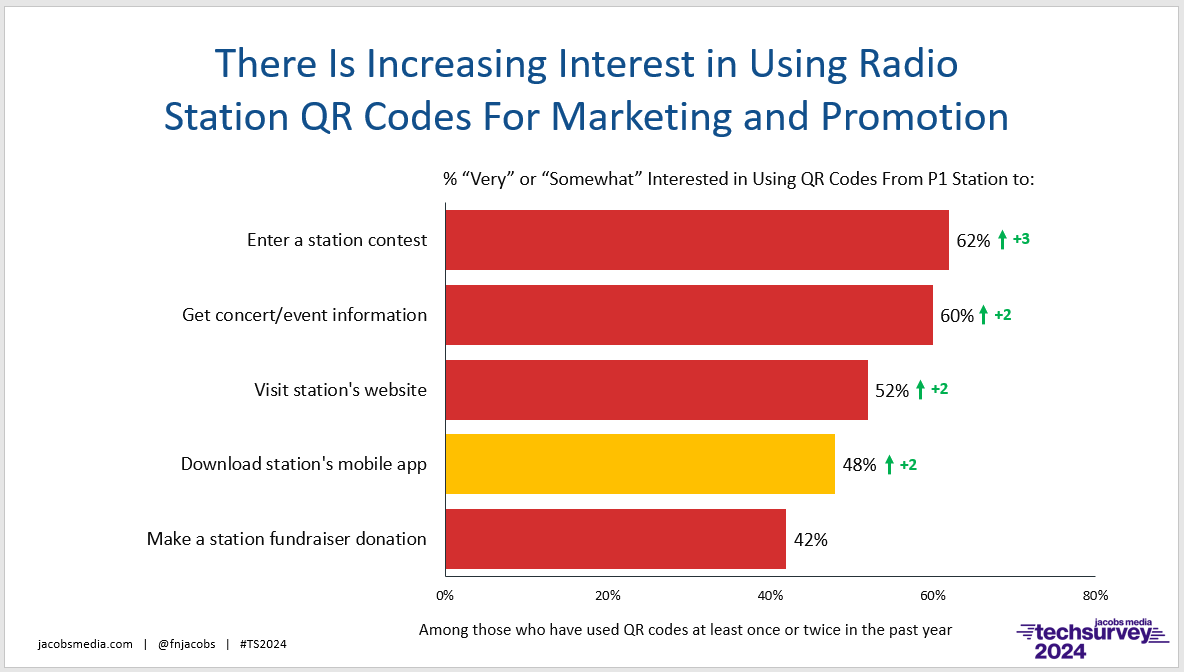
You may not realize it but 2024 is a big tech event. It’s the Big 3-0 for the QR code, the 30th birthday of those little fiducial markers on black squares on a white background.
Unlike barcodes, the QR code holds the data for a locator, an identifier, and for the purposes of web tracking.
You may be surprised to learn the QR code technology was developed in 1994 by auto Tier One Denso Wave once a part of Toyota. The technology was initially used to track the inventory of car parts.
But like so many aspects of technology innovations, the QR code experienced a hard pivot. It became a marketing tool, capable of carrying key information for businesses, organizations, and commercial operations, similar to what was once listed in a telephone directory.
But as a commercial endeavor, the QR code struck out. Through the first couple of decades of the 21st century, QR codes were little-used promotional vehicles, even mocked by web elitists.
But the biggest impediment to the lonely QR code was that iPhones did not build readers into their cameras until their iOS 11 update in 2017. Up to that point, in order to use QR codes on an iPhone, users had to download a third-party app.
readers into their cameras until their iOS 11 update in 2017. Up to that point, in order to use QR codes on an iPhone, users had to download a third-party app.
By the time iPhones contained QR readers, the ship had sailed. Most people simply ignored them. Until the arrival of COVID, that is.
While masks have rapidly disappeared and no one social distances anymore, those QR codes often used to read restaurant menus without having to touch them have stuck around.
As we learned this year in Techsurvey 2024, the incidence of using QR codes continues to rise. Now, nearly eight in ten have used this technology in the past year.

And as a result, you’re beginning to see these familiar codes wherever you look, mostly in promotional applications.
MSNBC has been promoting their app using QR codes embedded in the lower righthand corner of their screen. They also use them for podcast access as well as to take viewers deeper into a story or interview on their website.

The app provides MSNBC with the opportunity to create a deeper engagement with their fans, not to mention signing up for their newsletters, access podcasts, and other content offerings.
Starbucks has taken note. After a horrendous last quarter, the coffee magnate’s marketing team has concluded they have better connections (not to mention control) with consumers who have their app. It’s where they’re now running most of their promotions.
This month in their stores, an upright display encourages their clientele to use a QR code to download their app. This is another way Starbucks is “digitizing their audience.” When they download the app, customers spend more money, plus they are “trackable,” providing data on purchasing, usage, and other variables. It all starts with their app, and this simple QR code mechanism helps people skip the App Store and quickly download it.
More and more brands are experimenting with QR codes, looking for ways to more seamlessly connect with their audiences. YouTube is the latest to look for ways to integrate this technology with their content.
Social Media Today says YouTube’s strategy is designed to help content creators who have their own channels connect with their audiences – existing viewers and hopefully, new ones.
Here’s YouTube’s thinking:
“Up until now, creators who wanted to share their channel with others had to copy and paste the channel link, which is difficult to do offline. Now, we’re experimenting with Creator QR codes. In the experiment, users will be able to share their Channel QR code on or offline with others to easily scan.”
(If you have a YouTube channel, you can find your QR code in the “You” tab in the bottom of the YouTube app menu. Select “Share Channel,” and your code appears, like the one below.)
Will it work? Will YouTube’s “Creators” give the QR code program a shot? And if so, will regular viewers use the QR code? You never know until you try, but this experiment (and that’s what YouTube calls it), costs them next to nothing, the beauty of this technology.

So, what about for radio broadcasters? Is there an obvious application for QR codes?
Using Techsurvey, we’re learning what all those QR code users think stations can do with this technology. In this year’s survey fielded earlier this year, we had them rate a series of promotional and marketing activities, and they created this hierarchy:

Respondents get it, giving a thumbs up to all these options, especially using QR codes to enter a contest or access concert information. There is also interest in using the technology to go to the station website or download its app. Compared to 2023, the top four are a few points more interesting, an indication of increased comfort with the technology.
Of course, these results differ by format and individual station audiences. If you’re a stakeholder, go into your data how QR code usage and preferences look for your core audience.
That top choice – engaging in contests with QR codes – is the one that stands out to most program directors, as well as their attractive cost – which is nothing, of course.
QR codes are a free, simple, and nearly friction-less connection tool that most people use and understand. We’re going to see more brands using them for marketing, promotion, and connections – and perhaps other use cases no one’s thought of yet.
Especially at this time when radio’s promotion budgets are virtually nonexistent, QR codes present a great opportunity for stations to get creative.
You don’t have to crack any codes to figure that out.
- Attention Tech And Entertainment Writers: Don’t Mess With Radio! - May 15, 2025
- 3 Socio-Economic Shifts Every Radio Programmer And Seller Should Be Aware Of - May 14, 2025
- “It Was The Dumbest Contest In Radio History” - May 13, 2025




Leave a Reply